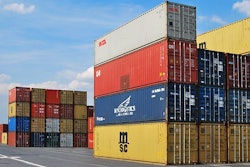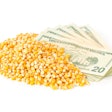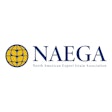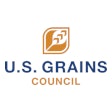With a record crop year in the books, U.S. farmers are now turning their sights to the 2017 planting season. And while there are still many unknowns - weather, crop yields, market fluctuations and a new political environment - one thing is certain: strong trade policies and dedicated market development will be critical to their success.
Why? The biggest potential for growth that will support markets for U.S. agriculture is abroad. With more than 95 percent of the world’s consumers living outside the United States, world markets are evolving and changing continually. And winning these sales requires engagement on a global scale.
Trade policy and market development are the core of the U.S. Grains Council's (USGC) efforts to build demand overseas for U.S. feed grains and related products like ethanol.
These markets are critical to the success of the entire grains sector. In fact, according to a recent analysis done for USGC and the National Corn Growers Association (NCGA), the export of grain and grain products in 2014 generated more than $80 billion in economic output, supporting more than 370,000 jobs. Nationally, agricultural exports are worth more than $130 billion a year, offer 30 percent of farm income and support 1 million jobs.
In the new year, this means a continued focus on:
Strong trade policy: trade agreements open the door for U.S. farmers and agribusiness to new markets, putting their products on par with others available around the world. In fact, in calendar year 2015, U.S. agricultural exports to the countries with which the United States has free trade agreements accounted for 43 percent of total U.S. agricultural exports, according to USDA data. USGC is strongly engaged in negotiating new trade policies and ensuring agreements we have with other countries and through global bodies like the World Trade Organization (WTO) keep U.S. products moving where they are demanded.
Engaging with global customers: trade policy paves the way for market development efforts that directly engage customers and show them the value and logic of buying from the United States. For USGC, this means working one-on-one with buyers through trade teams, providing information and offering local capacity building assistance wherever there is demand for U.S. grains. This work is critical to sustaining the momentum seen in strong grain exports over the last several months of 2016.
Boosting the markets of today and finding the markets of tomorrow: there is immense potential for increased U.S. grains-in-all-forms demand. Market development work over the past half-century has helped farmers expand into new markets in Asia, Africa, South America and the Middle East and helped USGC understand the markets that can still use more U.S. corn, barley, sorghum, distiller’s dried grains with solubles (DDGS) and - increasingly - ethanol. In these efforts, USGC is particularly focused on winning in the growing markets of our own hemisphere, engaging at a new level in India, diversifying DDGS markets and helping those who are seeking to expand their fuel choices and clean up their air do so with U.S. ethanol.
As our grain productive capacity continues to increase, and those around the world who need our grain continue to demand it in greater quantities, the potential for 2017 is great—if we continue to engage effectively with our partners around the world through both market development and strong trade policies.


















